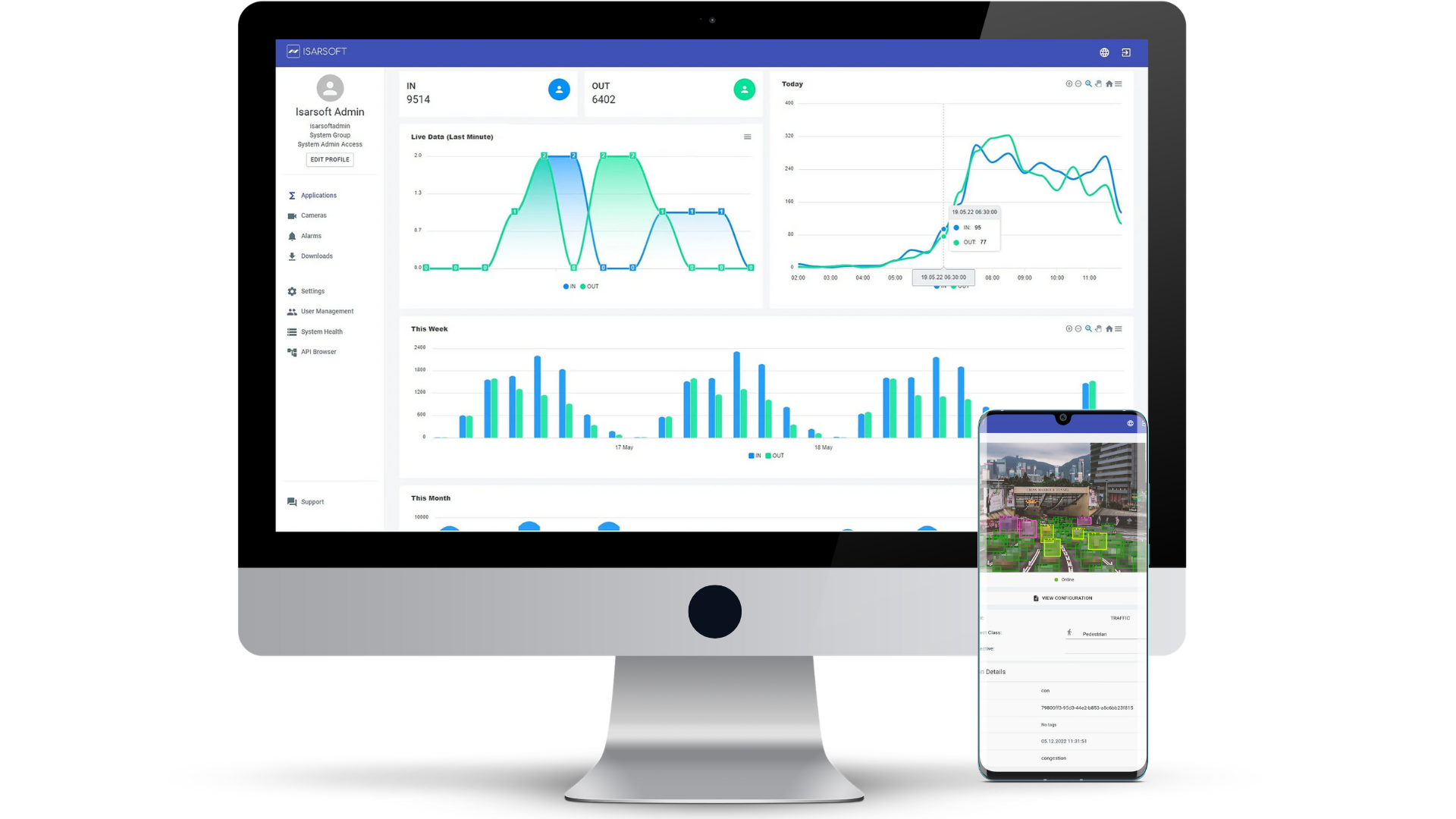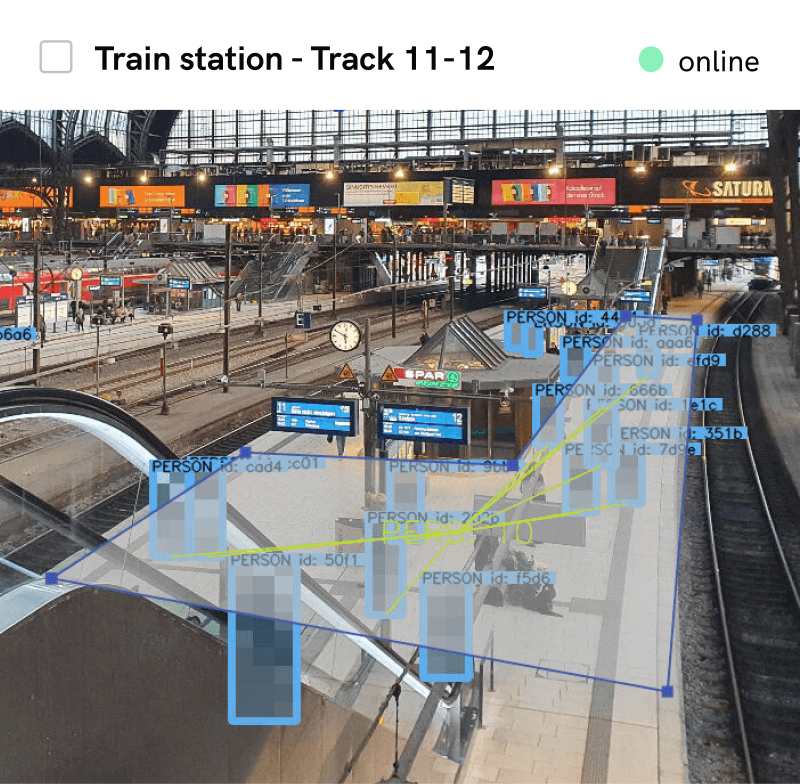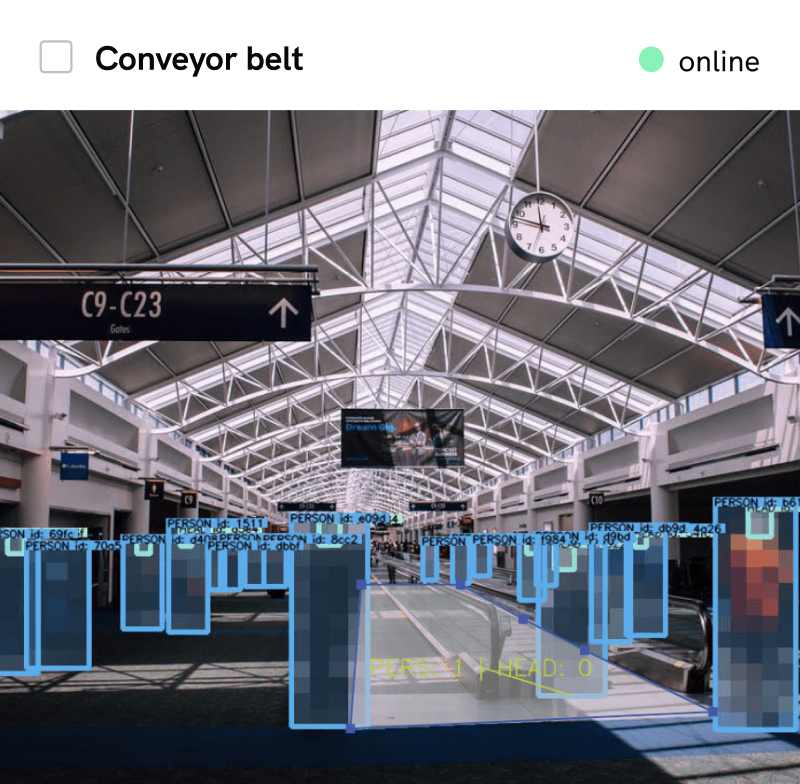AI in Supply Chain and Logistics
This blog post deals with the world of supply chain and logistics - and how AI-driven tech can make a difference. We go over applications, benefits, and challenges - and round things up with detailed insights in each section.
Published
October 24, 2023

Introduction
The Importance of Supply Chain and Logistics Management
Supply Chain and Logistics management consists of two primary components - supply chain and logistics.
Logistics, simply speaking, refers to the movement and storage of items in the supply chain. What then, you may ask, is a supply chain? Supply chain is a network of interrelated processes that contribute to the development of a product - manufacture, sourcing, distribution, storage, and selling. A complex system with many parts - good supply chain management indicates a requirement for coordination by all involved partners.
We are living in the golden age of technology - a time that has reinvented market access and turned into a well-oiled machine with perks like expedited shipping, reduced costs, a wide range of alternates, etc. The reason that supply chain and logistics management ranks so high in its impact on global economy is owing to its omnipresence in every industry.
Businesses usually function with the core objective of pleasing their customers, so that they are able to grow by means of increased customer loyalty - a consequence of factors such as product value, price, and customer service. Supply chain management enables consumers access to essential and non-essential items at lower costs, in a time-efficient way, and is imperative in the general enhancement of living standards across the globe.
Similarly, logistics management allows businesses to access international markets while also guaranteeing basic KPIs such as timely delivery. Not only does it positively impact business growth, it facilitates economies to earn considerably from foreign trade.
Understanding AI in Supply Chain & Logistics
Artificial Intelligence(AI) has the ability to perform a wide range of functions, many of which are relevant in the supply chain and logistics industry.
To start with, AI can be used to boost data analysis and pattern recognition - process and analyze large volumes of data and identify recurrent patterns among inventory information, historical sales, transport-based information, etcetera. This analysis can be used to leverage data-based decision making.
Another big use of AI falls in the predictive analysis space, often a key factor in the supply chain industry. With the help of AI, partners can anticipate many different things such as fluctuations in demand, plan their inventory schedules ahead of time, and optimize transport routes. Not only does this simplify the operational process, but also aids conservation efforts in the form of reduction of waste.
Supply Chain and Logistics also offers scope for AI-driven automation - most evident in tasks involving selection and packing - thereby reducing the possibility of error and inducing human focus onto more important tasks.

AI's role in improving operational efficiency is one that aims to combine forces with human judgement, splitting tasks in a way that focuses on automating the labor-intensive processes and concentrating human involvement on skill-intensive approaches.
AI Applications in Supply Chain and Logistics
Demand Forecasting and Planning
The joint functions of forecasting demand and planning accordingly occupies a very important position in the supply chain and logistics ecosystem. The ecosystem, as discussed earlier, is a product of several different components - all of which influence the effective functioning of it. In addition, it is also an industry that is resource-intensive and cost-intensive owing to various interconnected processes of manufacture, sourcing, and distribution.
That brings us to the 'why' of the matter - why it is important that demand be anticipated beforehand. As with any other major industry, the supply chain industry features many key players. In order to optimize the process and ensure that there is error and delay reduction, several factors need to be monitored. Some of these factors include transportation costs and time, manufacturing delays, wait time for necessary raw materials, economic conditions, fuel and gas prices, etc.
AI carries the potential to sift through large volumes of data, uncover key insights, and use them to help personnel achieve a clearer sense of what's to come - in the present and the future. Once the planning can be optimized according to the predictive analysis, benefits such as lower waste production and better cost efficiency can be observed.
AI can also be trained to identify and detect patterns in historical data - these records are often used to act as the informational base for forecasting models.
Inventory Management
A large part of supply chain and logistics is, no surprises there, the effective management of inventory. Inventory is a term used to encapsulate statistics such as number of items stocked, available items in product categories, number of items sold or shipped, damaged goods, etc.

While inventory management has witnessed a large degree of automation already (minus the assistance of AI), the implementation of AI promises a simplified, easier-to-use version.
For example, AI can be used to track and monitor availability figures of a particular item consistently. Once the level reaches the lower end of the threshold, which usually signifies a need for restocking, the person in charge for the same can be alerted. Not only does this save them the effort of a manual check, but also ensures an overall quick response time.
Route Optimization
What is an optimal route? An optimal route generally refers to a chosen path that fulfills criteria in the most efficient manner - less time, more deliverable ground covered. An important facet of the supply chain and logistics space, transportation routes are integral part of resource conservation and cost-cutting measures.
By implementing AI to optimizing the task, planners can get access to reliable insights regarding various KPIs such as time of travel, road conditions, dwell time, estimated cost, etc. It can also be used to assess external factors that carry impact on business operations such as fuel and gas prices and economic conditions.
Last-Mile Delivery
A technical term in the supply chain and logistics domain, last-mile delivery refers to the final leg of the transportation journey. For example, imagine you've ordered a product off of Amazon. In order for said product to get to you - it would have to shipped to you via a carried vehicle, from the warehouse to your location. This would be what is termed the last-mile delivery.

Albeit a relatively short process, last-mile deliveries need to be painstakingly planned. In combination with factors such as fluctuating demand, stock levels, and external conditions - streamlining the process is imperative to ensure that customers stay satisfied.
AI, when used in the context of last-mile deliveries, can greatly impact the efficiency of the operation.
Queue Management for Trucks
When a truck enters the loading dock in order to receive a shipment, it is generally one of a long queue of vehicles - each assembled for the same purpose. Trucks in a loading dock have to pass through a certain order of things - joining the queue at the end, eventual registration and processing when it reaches the front of the queue, loading, deregistration, driving out.
AI-powered video analytics can be used to optimize the flow of vehicles in a regulated manner. This can be done through the measurement of dwell time and average speed of trucks while in the queue, and average time for loading. By doing this, personnel have a more realistic approximation of likely duration for each part of the process - and can use available resources.
Intrusion Detection
Logistics centers and big warehouses are built to house expensive goods and products, ready to be shipped with little delay. As a result, security is a primary concern in these structures - with prevention of theft and loss prevention prioritized in every step along the way.
This is where AI comes into play - it can be used to detect intrusions or unauthorized access consistently, in real time. By training the AI in video analytics to detect and recognize the instances that constitute an anomaly - the room for error and negligence is considerably reduced. When the system detects an anomaly (theft, intrusion, breach of perimeter, unauthorized access), an alarm is sounded - alerting on-call staff and enabling them to take speedy action.
Benefits of AI Adoption in Supply Chain and Logistics
Security and Employee Safety
As mentioned previously in the article, security is a top priority in the supply chain and logistics ecosystem. Hence, it is important to ensure that warehouses, loading docks and areas, and storage centers are secured in a 100% fail-proof way - an outcome made realizable by AI-driven video analytics.
AI can be used to conduct various security-based functions - monitor employees to check for lacking protective gear, ensuring that machines-only areas are adequately meshed, keeping off unauthorized access in areas wherein forklifts are operational, and maintaining the state of general EHSQ.
.jpg)
An EHSQ Management System often consists of the following elements:
- Policy and commitment: Establishing a written policy that outlines the organization's commitment to EHSQ performance and compliance with relevant regulations and standards.
- Risk assessment and management: Identifying potential hazards and risks associated with the organization's operations and implementing measures to control and mitigate those risks.
- Compliance management: Ensuring compliance with applicable laws, regulations, and standards related to environmental, health, safety, and quality.
- Training and communication: Providing training and communication programs to employees and other stakeholders to ensure they are aware of the organization's EHSQ policies, procedures, and expectations.
- Performance monitoring and reporting: Measuring and reporting on the organization's EHSQ performance to identify areas for improvement and track progress over time.
- Continuous improvement: Implementing processes to continuously improve the organization's EHSQ performance and meet evolving regulations and stakeholder expectations.
In a warehouse, following the above protocol would be imperative in ensuring employee safety, in addition to promoting individual awareness of possible hazards and how to best prevent them.
Real-time Monitoring
An obvious benefit, but no less important than any other on the list - real-time monitoring in a warehouse is incredibly useful in terms of operational processes, loss prevention, and related functions.
Through the ability to keep an eye on events as they unfold, logistics personnel can evaluate important KPIs such as employee conduct and safety, the efficiency of existing processes, occupancy and storage capacity measurement, etc. These are all relevant in a day's work and can help organizations cut back on costs, time spent, and resources used.
Quality Control
Quality control refers to a system of maintaining standards in products by evaluating a sample of the output against the specifications. In the supply chain, it would mean checking to see if the stored/loaded products pass the quality test and are of an acceptable standard for shipping.
This can be done against a variety of parameters - damaged or broken products, already opened packages, malfunctioning products, etc.
Challenges and Considerations
Data Privacy
While AI has the potential to offer countless benefits in the supply chain domain, it is important that data privacy standards be stringently maintained. One of the ways in which to do this is by ensuring the anonymization of data streams, to protect private information such as identity, financial figures, etc.
Privacy masks are a good way to carry out the same. It is automatic and applicable to any detected object, and makes privacy absolutely airtight.
It is also necessary to ensure that all AI-powered applications be compliant with local and global privacy regulations (GDPR for the EU, CCPA in the US, etc.)
Security
Data security refers to the safeguarding of digital data in a database against unwanted access such as in a cyber attack or data breach. The primary objective is to protect the data against exposure, deletion, or corruption.
There are many ways to implement good data security. Some well-known options are multi-factor authentication, encryption of data, and using a firewall. When applied in conjunction, they can largely enhance how secure the data is.
Ethical Decision-Making
One of the key advantages of AI is that it allows the automation of most operational processes, thereby allowing for less error and reduced bias. However, the human component is crucial in making sure that ethical principles are upheld when making important decisions.
True success with AI can only be achieved when a judicious mixture of man and machine comes together with the aim of eliminating bias.
Public Acceptance and Trust
Just as with any other phenomenon, the use of AI in supply chain and logistics management can be fully implemented only when it is accepted by all stakeholders in the process - personnel, planners and architects, drivers, floor staff, and managerial employees.
Awareness is imperative, as is positive reinforcement through consequence-based decisions to help cement the public’s trust in AI.
More about Isarsoft
With Isarsoft Perception, your camera systems become part of your business intelligence. Whether the goal is to increase efficiency, customer satisfaction or safety, Isarsoft Perception provides the insights needed for informed decisions.

Contact us, to learn more about how to turn security cameras into intelligent sensors.
Optimize your business processes.
Improve business processes with video-based business intelligence from Isarsoft.









.webp)